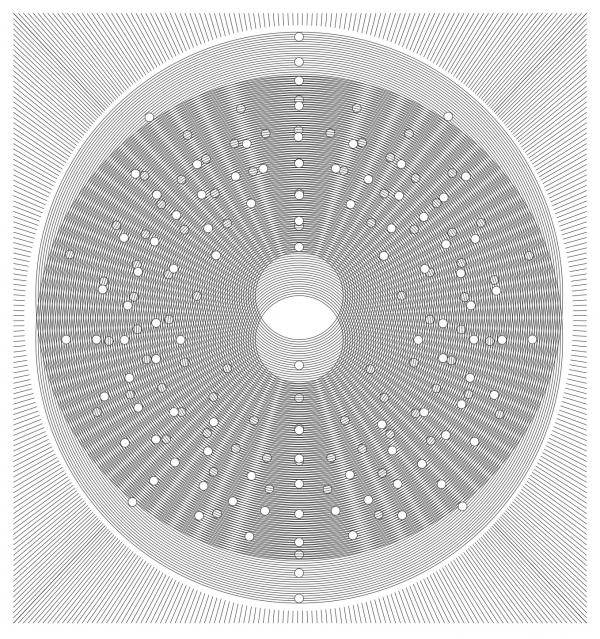
CAC/SMC Centre for Contemporary Art
Energy & Technology Museum
Vilnius, Lithuania
18 September - 25 October 2020
Opening times: 12pm to 8pm everyday except Mondays.
The exhibition Splitting the Atom takes place across two venues in Vilnius, the CAC/SMK and the ETM Energy and Technology Museum.
Curators: Ele Carpenter and Virginija Januškevičiūtė.
Artists: Lise Autogena & Joshua Portway, Erich Berger, U. Kanad Chakrabarti, Thomson & Craighead, Jonas Žukauskas & Jurga Daubaraitė, Hector Dyer, Finger Pointing Worker, Gershom Garlngarr, Jeremiah Garlngarr, Zaccheus Garlngarr, Jehosaphat Garlngarr, Isao Hashimoto, Gabriella Hirst, Martin Howse, Kristina Inčiūraitė, Erika Kobayashi, Sandra Lahire, Aimee Lax, David Mabb, Cecile Massart, Alex Ressel & Kerri Meehan, Deimantas Narkevičius, Yelena Popova, Lisi Raskin, Nick Crowe & Ian Rawlinson, Susan Schuppli, Augustas Serapinas, Emilija Škarnulytė, Ignas Krunglevičius & Siri Harr Steinvik, Himali Singh Soin with David Soin Tappeser, Kota Takeuchi, Mark Aerial Waller, Peter Watkins, Andrew Weir.
There are two nuclear power plants in the vicinity of Vilnius: the decommissioned plant at Ignalina in Lithuania, and Astravets in Belarus which is not yet operational. A third infamous plant is Chernobyl, eerily present following the effects of its catastrophic failure, and more recently via the popular television series that focuses on the disastrous consequences of lies and neglect. The exhibition Splitting the Atom offers insight into the different cultural contexts of these plants and their role in the global infrastructure of the nuclear cycle, from natural resource extraction to waste.
Nuclear technology was integral to the aesthetics of the Cold War; the scale and terror of the atomic bomb shaped a hypnotic image of a nuclear sublime where modern science and technology were perceived as omnipotent. By the beginning of the new millennium, evidence of everyday experience of radioactive contamination through nuclear testing, uranium mining, and colonial exploitation combined with the dangers of radioactive waste was better understood and radically influenced how artists consider nuclear aesthetics.
Today nuclear culture explores questions of deep time contamination, colonial nuclearity and radioactive waste management as well as the need to disarm. Practical concerns caused by aging technologies and radioactive waste become graver and increasingly urgent every day. While this work takes place, nuclear technologies continue to penetrate different aspects of our everyday life; and we know that radioactive fallout particles will remain across the surface of our planet forever.
Why is it so difficult to build trust in nuclear? What are the costs of energy created through nuclear fuels? What defines nuclear heritage, and what happens when radioactive waste becomes part of our culture? How are nuclear technologies part of colonial histories? In this exhibition, over 35 international artists who have made work in the field of nuclear heritage explore these questions and issues.
----------------------------------------------------------
Splitting the Atom was initiated by Eglė Rindzevičiūtė as a parallel project to the UK Arts and Humanities Research Council networking project ‘Nuclear Cultural Heritage: From Knowledge to Practice’. The network’s partner project, ‘Atomic Heritage Goes Critical’, led by Anna Storm, will organise an international scientific conference on histories and cultures of atomic power in Vilnius and Ignalina in 2021.
The project has been developed by Virginija Januškevičiūtė and the Contemporary Art Centre in collaboration with the Energy and Technology Museum and the Nuclear Culture Research Group led by Ele Carpenter.
Curators: Ele Carpenter and Virginija Januškevičiūtė
Exhibition architecture: Povilas Marozas
Graphic design: Vytautas Volbekas
For more details about the exhibition and daily film screenings please see the detailed exhibition guide, which you can download from both the Contemporary Art Centre’s website (cac.lt) and the project microsite Splitting the Atom.cc as well as the CAC Reading Room.
Nuclear Superpowers Art, culture, and heritage in the Nuclear Age. Published on balticworlds.com on April 22, 2021. Eglė Rindzevičiūtė talks to Ele Carpenter about the strong correlation between the experience of imperialism and colonial power, high technology and cultural responsibility. https://balticworlds.com/nuclear-superpowers/
The essay 'Splitting the Atom, Creating Trust’ by Paul Josephson (Colby College), Tatiana Kasperski (Pompeu Fabra University), Eglė Rindzevičiūtė (Kingston University London), and Andrei Stsiapanau (Vytautas Magnus University) was commissioned as part of the project and published in collaboration with Echogonewrong.com and Artnews.lt.